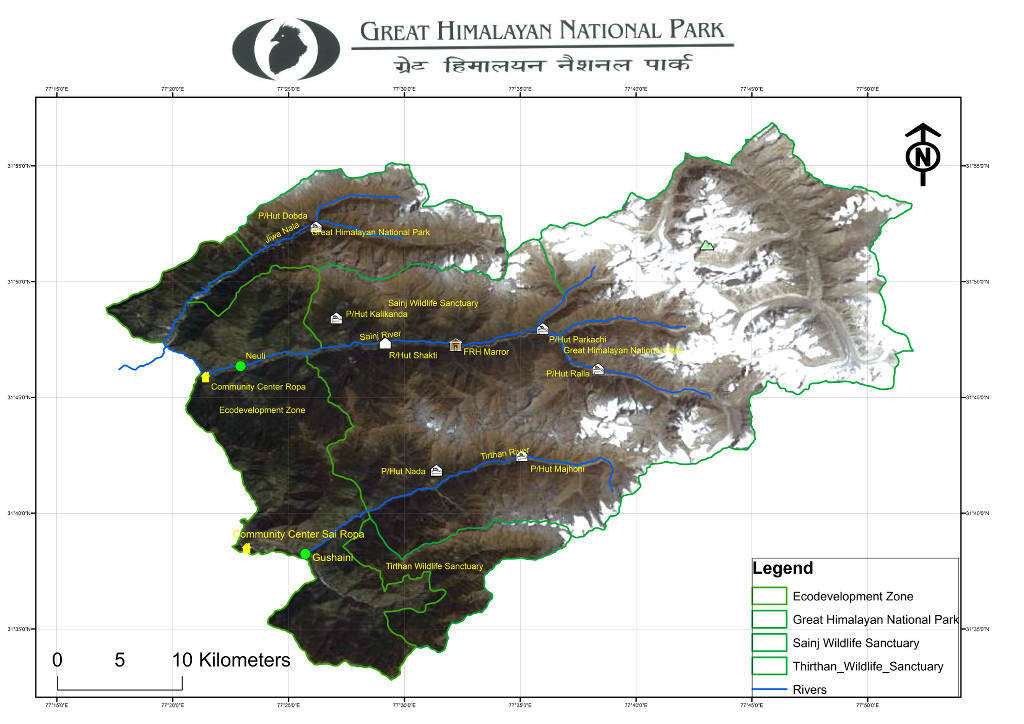
Management Plan
Protection and Management Requirements
The GHNPCA is subject to sound legal protection, however, this need to be strengthened to ensure consistent high level protection across all areas. This pertains to the transition of some areas from wildlife sanctuary to national park status. Tirthan and Sainj wildlife sanctuaries are designated in recognition of their ecological and zoological significance and are subject to wildlife management objectives, and a higher level of strict protection is provided to GHNP which is a national park . National parks under the wildlife Protection Act, 1972 provide for strict protection without human disturbance. The GHNPCA boundaries are considered appropriate and effective management regime is in place including an overall management plan and adequate resourcing . The GHNPCA has a buffer zone along its south-western side which correspondences to the 26,560 hac. Ecozone, the area of greatest human population pressure. Continued attention is required to manage sensitive community development issues in this buffer zone and in some parts of the GHNPCA itself. The sensitive resolution of access and use rights by communities is needed to bolster protection as fostering alternative livelihoods which are sympathetic to the conservation of the area. Local communities are engaged in management decisions however more work is needed to fully empower communities and continue to built a strong sense of support and stewardship for the GHNPCA. Included within the property is the Sainj wildlife sanctuary with 120 inhabitants and the Tirthan wildlife sanctuary, which is inhabited but currently subject to traditional grazing. These two sanctuaries open up concerns regarding the impacts of grazing and human settlements. Both these aspects are being actively managed, a process that will need to maintained. The extent and impacts of high pasture grazing in the Tirthan area of the GHNPCA needs to be assessed and grazing phased out as soon as practicable. Other impacts arising from small human settlements within the Sainj area of GHNPCA also need to be addressed as soon as practicable.
The latest comprehensive Management Plan of Great Himalayan National Park is written by Shri Ajay Srivatsava, IFS the then Director cum Conservator of Forests GHNP Shamshi for the period April 2010 to 2020. Some points reflecting the concept of management of GHNP are given below:
Goal and Objectives
The primary goal of management is to link the village level development issues ( local livelihood ) with the conservation of biodiversity at the Great Himalayan National Park. This needs to be done by integrating environmental, social and economic issues into holistic framework based on the livelihoods of the natural resource dependent community, In order to achieve this goal, it is imperative to integrate the functions at two fronts, i.e.
- Working with the local communities to reduce their dependencies on the park’s natural resources, and
- Interventions to manage monitor and protect the natural habitats and resources.



